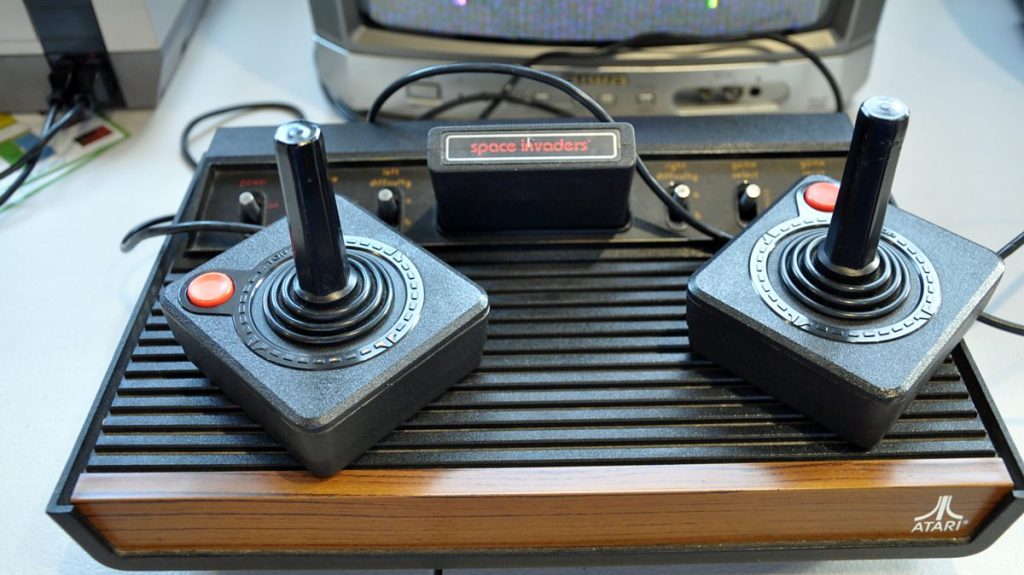The history of video games stretches back further than many might realize. But the story of bringing those games into the home, sparking a cultural phenomenon that continues to this day, began with the first game console. This wasn’t a sleek machine with high-powered graphics; it was a pioneering effort that laid the groundwork for everything that followed.
The Birth of the Odyssey
In 1972, the Magnavox Odyssey became the world’s first commercially available home video game console. Developed by Ralph Baer, a German-born engineer working for Sanders Associates, the Odyssey wasn’t a single unit but a series of interchangeable game cards that connected to your television. These cards offered a variety of rudimentary games, including table tennis, tennis, and even a rudimentary light gun game.

Simple Yet Innovative
While the games themselves seem primitive today, the Odyssey was a marvel of innovation for its time. It used analog circuits to generate the visuals, a far cry from the complex digital processing of modern consoles. However, it offered something far more important: the ability to play video games on your home TV, without needing a dedicated arcade cabinet.

Beyond Pong: Expanding the Genre
The Odyssey’s success inspired a wave of imitators, most notably the Atari Pong console released in 1975. While Pong offered only a single game (table tennis), it captured the public imagination and solidified the concept of the home video game console. However, the Odyssey wasn’t a one-trick pony. Its interchangeable game cards offered a variety of experiences, including chase games, maze games, and even a rudimentary shooting gallery.

Impact and Legacy
The first game console’s impact went far beyond simply offering a new form of entertainment. It ushered in a new era of interactive media, where players could directly influence the action on the screen. This sense of agency, of being in control, was a major part of the appeal of video games and continues to be a core element of the gaming experience today.
Seeding the Future
The first game console also had a profound impact on the video game industry itself. It demonstrated the viability of the home video game market, paving the way for the development of more sophisticated consoles and games. It also helped to establish the basic design principles of future consoles, including the use of controllers and cartridges.

Beyond the Odyssey: A Look at Early Competitors
While the Magnavox Odyssey holds the title of the first home video game console, it wasn’t the only contender in the early days. Several other consoles emerged during this period, each offering its own unique take on the concept. Here are a few notable examples:
Atari Pong (1975):
As mentioned earlier, the Atari Pong console offered a single game – a variation of table tennis. However, its simple and addictive gameplay, coupled with its affordable price, made it a massive success and helped to solidify the home video game market.
Coleco Telstar (1976):
Another Pong clone, the Coleco Telstar offered a similar experience to the Atari Pong but with a few additional variations on the core gameplay. It also included light gun games, adding a new element to the early home console experience.
Commodore VIC-20 (1980):
While not strictly a console, the Commodore VIC-20 was a home computer that also offered a variety of video games. It marked a shift towards more complex games and helped to blur the lines between consoles and computers.
A Turning Point in Entertainment
The arrival of the first game console marked a turning point in the history of entertainment. It brought video games out of the arcades and into the living room, creating a new form of interactive entertainment that would capture the imagination of generations. The simple act of plugging a console into your TV and playing a game on your home screen opened up a world of possibilities, paving the way for the vast and vibrant video game industry we know today.

The Magnavox Odyssey may have been the first commercially available home video game console, but it wasn’t without competition. Here’s how some key players reacted to the Odyssey’s arrival:
-
Atari: While Atari wasn’t the first to market, they quickly saw the potential of the home console market. Their response? The iconic Atari Pong (1975). This single-game console, offering a variation of table tennis, capitalized on the simplicity and addictive gameplay the Odyssey introduced. It became a massive success, solidifying the home video game market and even overshadowing the Odyssey in public perception.
-
Coleco: Another early competitor was Coleco. Their Telstar console (1976) was another Pong clone, offering similar gameplay with a few variations. However, Coleco also included light gun games, adding a new element to the early console experience and demonstrating a willingness to expand beyond simple table tennis.
-
RCA: RCA, a major electronics company at the time, also entered the fray with their Studio II console (1977). This console offered a wider variety of games than the Odyssey, including some based on popular licenses like Pac-Man. However, it wasn’t as commercially successful as the Atari Pong or Coleco Telstar.
-
Commodore: While not strictly a console, the Commodore VIC-20 (1980) was a home computer that also offered a variety of video games. This challenged the clear distinction between consoles and computers and hinted at the future convergence of the two platforms. The VIC-20 offered more complex games than the early consoles, marking a shift in the industry’s focus.
These are just a few examples, but the response to the Magnavox Odyssey was swift and varied. The success of the Odyssey proved the viability of the home console market, and competitors rushed in with their own offerings. This early competition helped to shape the video game industry by driving innovation and pushing the boundaries of what was possible in a home console experience.
The Legacy of Innovation
The first game console may seem primitive compared to today’s powerful machines, but its legacy is undeniable. It was a pioneering effort that sparked a revolution in entertainment. It showed the potential of video games and laid the groundwork for the incredible technology and immersive experiences we enjoy today. As we continue to explore the ever-evolving world of video games, it’s important to remember the humble beginnings and the innovative spirit that brought video games into our homes.


